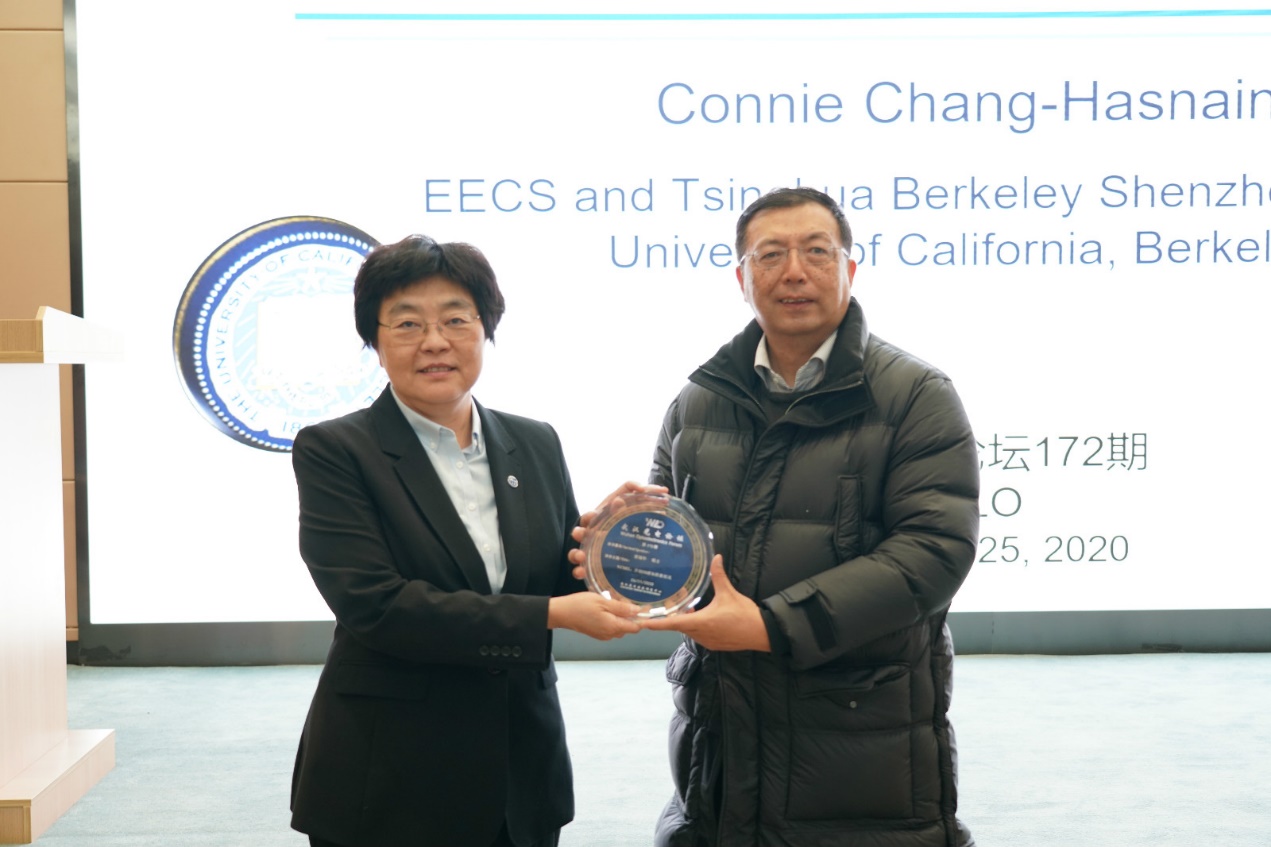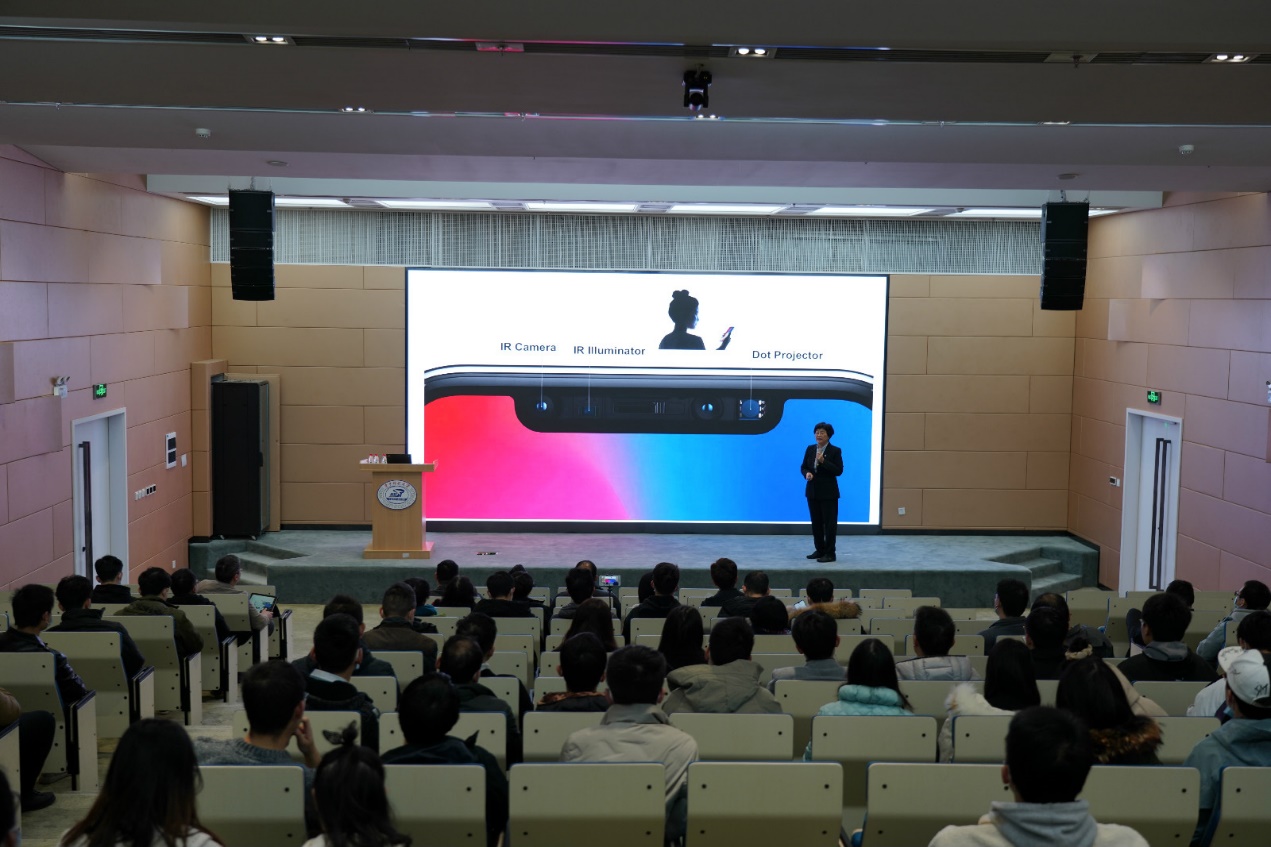Wuhan Optoelectronics Forum No. 172 was successfully held in Auditorium C117 at Wuhan National Laboratory for Optoelectronics (WNLO) in themorning of November26. Professor Connie Chang-Hasnainfrom the University of California, Berkeley delivered an exciting presentation entitled "VCSELs for 3D Sensing and 5G Communications". Professor Jian Wang from WNLO chaired the forum. Professor Changsheng Xie, the vice director of WNLO, awarded the forum medal to Professor Connie Chang-Hasnain.

Vertical cavity surface emitting lasers (VCSELs) have long been predicted as low-cost enabling laser sources for many applications including optical communications, sensing and imaging. Year 2017 marked the beginning of VCSEL arrays for 3D sensing in consumer electronics, with facial recognition applications for smart phones, ATM, and electronic payments. High power VCSELs also began to penetrate the LIDAR markets for automobiles, both for Advanced driver-assistance systems (ADAS) as well self-driving cars. In addition, 200 Gbps VCSEL 1x4 arrays are enabling high bandwidth datacenter communications. She discussed some of the recent advances, applications and future prospects for VCSELs in 3D sensing, LIDAR and optical coherent tomography applications. She also discussed future prospects for advanced applications.
After the talk, she had an enthusiastic academic exchange with teachers and students. Then, Professor Connie Chang-Hasnain visited the exhibition hall of WNLO and the Laboratory of Integrated Photonics.

Connie Chang-Hasnain is Whinnery Distinguished Chair Professor in Electrical Engineering and Computer Sciences, at the University of California, Berkeley. She was the Associate Dean for Strategic Alliances of College of Engineering since 2014-2019 and Chair of the Nanoscale Science and Engineering Graduate Group at UC Berkeley 2006-2017. Prior to joining the Berkeley faculty, Dr. Chang-Hasnain was a member of the technical staff at Bellcore (1987–1992) and Assistant Professor of Electrical Engineering at Stanford University (1992–1995). She is a fellow of IEEE, OSA and National Academy of Inventors. She is member of the US National Academy of Inventors and National Academy of Engineering.
Professor Chang-Hasnain’s research interests include semiconductor optoelectronic devices, materials and applications. She pioneered the first planar VCSEL structure using proton implantation for array fabrication with Gbps modulation, first MEMS-VCSEL for wavelegnth tuning, and the first 1000-elecment VCSEL arrays for 3D imaging. Prof. Chang-Hasnain has been honored with many awards including the Okawa Prize (2018), UNESCO Medal For the Development of Nanoscience and Nanotechnologies (2015), IEEE David Sarnoff Award (2011), and the OSA Nick Holonyak Jr. Award (2007). Additionally, she has been awarded with a Vannevar Bush Faculty Fellowship, a Humboldt Research Award, and a Guggenheim Fellowship. She was a member of IEEE LEOS Board of Governors, OSA Board of Directors, and the Board on Assessment of NIST Programs, National Research Council. She was the Editor-in-Chief of Journal of Lightwave Technology 2007-2012. Professor Chang-Hasnain is the OSA President-Elect in 2020 and will be the President in 2021.